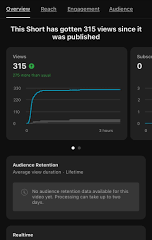Exploring the Innovations of Claude AI in Artificial Intelligence

Introduction
Artificial intelligence (AI) has become an integral part of modern technology, continually evolving to enhance various sectors, including healthcare, finance, and education. One of the latest advancements in this domain is Claude AI, developed by Anthropic. As a state-of-the-art conversational AI, Claude presents significant implications for how humans interact with machines, providing a more intuitive and user-friendly experience. Understanding Claude AI’s functionalities and potential applications is crucial for anyone interested in the future of technology.
What is Claude AI?
Claude AI is a language model designed to assist with natural language processing tasks. Launched in early 2023, this advanced AI is built on cutting-edge algorithms that allow it to comprehend and generate human-like text responses. Claude’s architecture enhances its ability to follow instructions, provide contextually relevant information, and exhibit a greater understanding of nuanced dialogue. Unlike its predecessors, Claude AI emphasizes safety and is programmed to minimize harmful or biased outputs.
Recent Developments and Releases
Since its introduction, Claude AI has undergone several updates aimed at refining its capabilities. The current version, Claude 3, boasts improved performance metrics, including faster response times and a broader knowledge base. These enhancements have been driven by user feedback and extensive testing, making it a popular choice for businesses seeking AI-driven solutions for customer service, content creation, and more.
Notably, Claude AI has also made strides in accessibility. With a user-friendly interface, it is designed to be easily adopted by individuals and organizations without deep technical expertise. Its adaptability makes it suitable for various industries, from small startups to large corporations.
The Importance of Claude AI
The rise of Claude AI reflects a growing trend in AI development focusing on ethical considerations and human alignment. As AI systems are becoming increasingly integrated into daily life, ensuring they operate safely and effectively is essential. Claude AI’s emphasis on responsible AI reflects a broader commitment to creating technology that prioritizes user safety and minimizes the risk of misinformation.
Conclusion
As we continue to witness rapid advancements in artificial intelligence, Claude AI stands out as a key player shaping the future landscape of human-computer interaction. Its innovative design and focus on safety make it a pivotal tool for businesses and individuals, offering a glimpse into how AI can enhance productivity while prioritizing ethical considerations. Looking ahead, Claude AI’s ongoing development will likely set a precedent for future AI systems, guiding best practices in the industry and paving the way for more sophisticated technological solutions.




